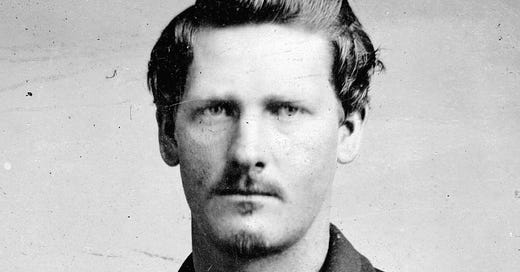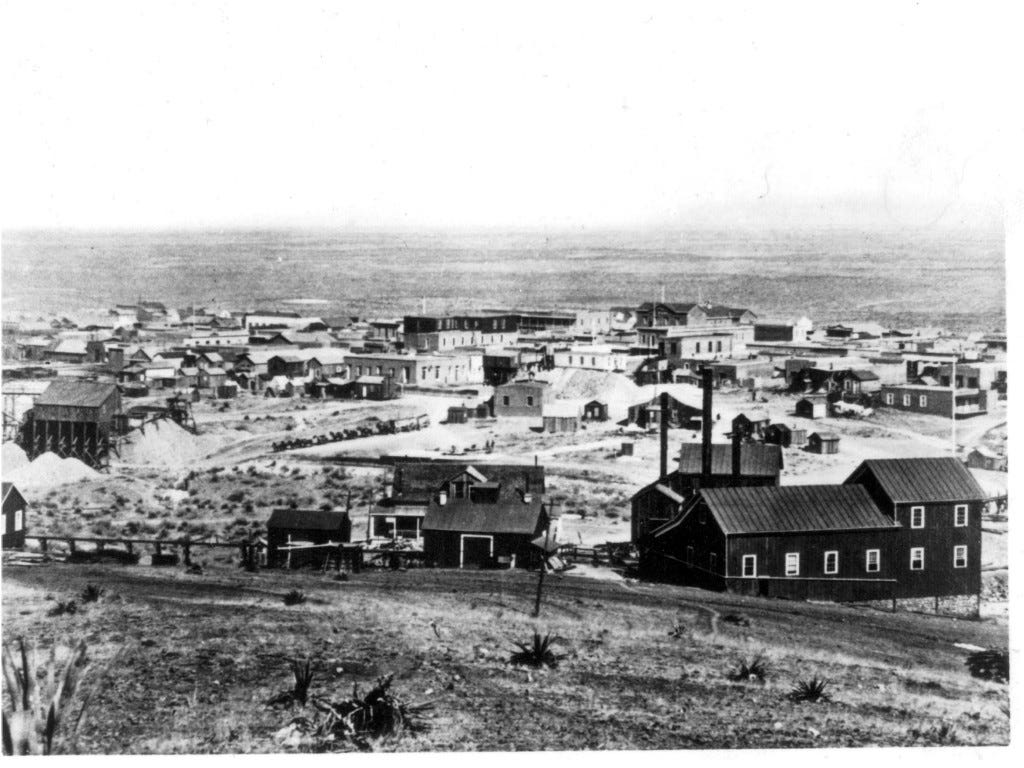Who was the real Wyatt Earp?
Wyatt Earp will be forever known for his participation in the Gunfight at the O.K Corral but how much of his legend is actually true?
The gunfight was over in just over 30 seconds. As the smoke cleared no one at the time would have given it a second thought. After all, this was the wild west. A place where gambling, prostitution, and corruption were rife. What happened on October 26th 1881, has become one of the most iconic moments in American History. The explosive crescendo would firmly establish a narrative of the lawman overcoming corrupt men in a lawless town. The town, and the lawman involved, would go on to become legends. But how much of what we know about the Gunfight at the OK Corral is actually true? As the legend of Wyatt Earp has continued to grow, can we really see him as a good cop in difficult times?
By the time Wyatt Earp had arrived in Tombstone, Arizona, he had already made a reputation for himself as a lawman to be feared. This wasn’t to mean that he had a squeaky clean past. He had left his first law enforcement job in Missouri following allegations of mishandling public funds in 1871. Later that same year he was arrested for stealing horses but the case never went to trial. He would find work as an enforcer at a brothel in Illinois before heading to Kansas. In Wichita, he would re-enter the law enforcement profession before quickly moving on to Dodge City after seriously beating a man. Whether he fled to escape any repercussions we simply do not know.
Dodge City was also known as the “Wickedest Little City in the West.” Its fierce reputation required the same in its police. Earp would go on to become the assistant Marshall during the busy cattle ranching periods. Off-season, he would head to Texas and New Mexico to try his hand at professional gambling.
It would be in Texas where he would meet another participant involved in the Gunfight at the OK Corral. John Henry Holliday was also known as “Doc” Holliday due to his previous career in Dentistry. Diagnosed with consumption, Holliday knew he would not have long to live. After a failed dentistry partnership in Dallas, he would spend the rest of his time drinking and gambling. The two men would become lifelong friends...well for as long as Holliday would live. Holliday’s imminent death made him fearless. He knew the illness would kill him eventually but was going to leave the world on his own terms.
The town of Tombstone was a small silver mining town in Arizona. With its newfound riches, the town was a haven for those looking to make money but with that, it was also an opportunist’s paradise. Aside from those searching for new wealth, the lure was too strong for the likes of Wyatt Earp and Doc Holliday. This was a town ripe for the taking as the saloons, brothels, and gambling dens grew.
Moving to Tombstone in 1879, Wyatt would be joined by his brothers, Virgil and Morgan. Shortly after, Holliday would soon join them. Virgil would be made the Town Marshall a short time later. The four men would become the law in this notorious town. In October 1881, the town would pass an ordinance prohibiting the carrying of weapons. It would be Virgil’s job as Town Marshall to enact it. In order to help him to do it, Virgil deputised his brothers and Doc Holliday. Soon, the tempers with some in the town began to fray.
It wouldn’t take long before arguments began to erupt. One pivotal argument took place on the 25th of October between Doc Holliday and Ike Clanton. Clanton had a reputation as an outlaw and was well known for cattle rustling. A fight would break out between the two men before being broken up. However, Ike was carrying an illegal weapon that Virgil had to remove. He would be taken to the judge in order to face his fine. Infuriated, Ike wanted revenge not only on Virgil but also on the other Earp brothers and Holliday. He sought out a group of five other cowboys including his brother Billy and the McLaurys. Defying the law they announced that they were armed and fully intended on remaining so.
No one knows who fired first when the two opposing parties met the next day outside the OK Corral. What we do know is that Wyatt Earp escaped unharmed. His brothers and Doc Holliday would be injured but alive. The same could not be said about the Clantons and McLaurys. Tom and Frank McLaury were dead as was Billy Clanton. Ike and the others got away.
There would be consequences. Ike claimed that the Earps with Holliday shot at unarmed men. This led to the quartet being arrested themselves accusing them of murder. The preliminary hearing would last a month and it was proven that two of the cowboys were in fact, armed. The trial was thrown out.
Justice had failed Ike Clanton but revenge was still on his mind following the gunfight. Later in 1881, Virgil Earp was ambushed and shot. Although Virgil survived, his brother Morgan would not be so lucky in 1882 when he was killed. Wyatt, who was now a deputy U.S Marshall formed a posse determined to bring down those who killed his brother. Soon there was an arrest warrant out for Wyatt and he fled to California.
In California, Wyatt and his companion, Josephine Marcus, laid low. He would support himself through gambling, training horses, and promoting boxing matches. In 1896 he would even referee the fight between Bob Fitzsimmons and Tom Sharkey. Controversy would follow Wyatt even in the ring. Fitzsimmons dominated the fight and knocked out Sharkey but Wyatt deemed the knock-out blow to be illegal and awarded the fight to Sharkey. The scandal would leave another blotch on his eventful life.
Wyatt Earp was the last surviving participant of the gunfight at the OK Corral, passing away in his home on the 29th of January 1929. After his death he would be portrayed as the heroic lawman we know today, thanks largely to Stuart Lake’s 1931 book, “Wyatt Earp: Frontier Marshall”. The book became the key source used for the Hollywood films that we know today. Wyatt was also involved in the making of many early westerns as a consultant. Here, he would tell stories of the old west to others. How much was actually true is unknown, but it would allow Wyatt to tell his own story and in doing so, become a legend of the Wild West.
This article was featured in issue 10 of Inside History magazine. You can get this edition from our online store or by clicking here.




